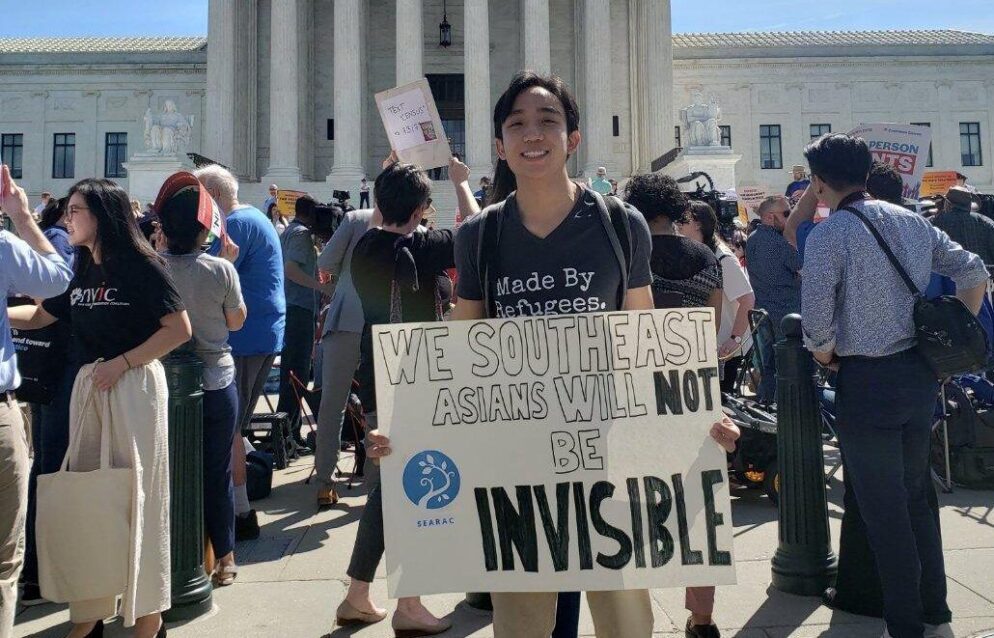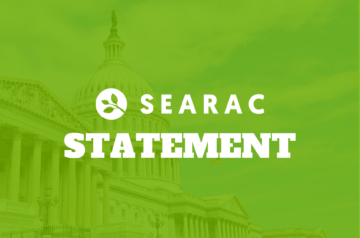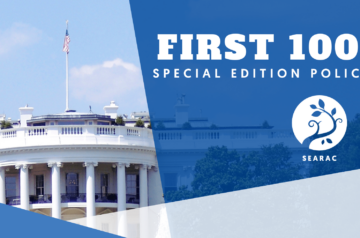WASHINGTON, DC – Today, the US Census Bureau released the first population dataset from the 2020 Census for approximately 1,500 detailed racial and ethnic groups. The dataset includes disaggregated data for Cambodian, Hmong, Laotian, and Vietnamese communities, and for the first time, disaggregated data for a number of additional Southeast Asian American (SEAA) groups, including Iu-Mien, Lahu, and Tai Dam.
However, this release does not include disaggregated data for many other SEAA populations, such as the Montagnard. The public availability of Southeast Asian American communities in official US Census Bureau data is essential for our communities’ experiences to be made visible to policymakers and to ensure that resources are allocated equitably to SEAA communities across the country. As we celebrate the increasing visibility of SEAAs and the potential of the new data to ensure equity for refugee populations, SEARAC urges additional reporting by the Bureau to ensure that subsequent data are even more inclusive, accurate, and honors our right to self-identification.
Additionally, despite significant community concern, Census continues to classify the Hmong as East Asian instead of Southeast Asian. While the Bureau includes a technical note on their most recent technical document (chapter six) acknowledging that many Hmong identify as Southeast Asian, the note provides little guidance for researchers who may seek to aggregate Asian populations into geographic datasets.
“Southeast Asian Americans have a right to be seen, and that includes in official datasets like the one released today by the US Census Bureau,” stated Quyên Đinh, SEARAC Executive Director. “When our communities are explicitly named in research and data collection, our experiences and challenges are made visible, allowing more resources and investment into the communities who need it most. The 2020 Census is a significant step forward, particularly for Iu-Mien, Lahu, and Tai Dam communities that have previously never been captured by the decennial census. At the same time, SEARAC and our partners will continue to advocate with the Census Bureau to ensure that all SEAA communities are counted. We will also continue to work with Hmong community leaders to make sure that the Census Bureau does not continue to misclassify that community.”
“The inclusion of Iu-Mien as a population category in the official 2020 Census is groundbreaking,” stated Susan Saechao, Executive Director of Iu-Mien Community Services. “The experiences of Iu-Mien communities in the United States include rich culture, leadership, and history, but we have also encountered challenges that are obscured by data that do not allow us to be named or be seen. We are proud to see our people accurately reflected in the dataset that has been published today, but it is heartbreaking to know that other refugee and immigrant communities like ours have been denied that same experience. We urge the Census Bureau to further disaggregate Southeast Asian American community data.”
“Data must reflect and amplify the stories and lived experiences of Southeast Asian Americans. It is imperative that the US Census Bureau prioritizes this in their data collection. As a member of the Montagnard community, the ethnic and Indigenous tribes of the Central Highlands of Vietnam, we are oftentimes misrepresented, overlooked, or forgotten,” shared Sun H, Community Engagement & Power Building Director at SEAC Village. “It is vital that my heritage as a Montagnard-Bunong person is accurately represented. As a minority within a minority within a minority, the absence of proper representation threatens to make Montagnard communities invisible. Montagnard communities have fought against erasure historically in Vietnam and our fight continues in the US. We urge the US Census Bureau to honor our right to self-identification and provide response examples that align with how we, as a community, choose to identify.”
“While we appreciate the engagement the Bureau has recently done with the Hmong community and the technical note that came as a result of some of those conversations, we are still deeply troubled that our communities remained misclassified as East Asian,” said May Yer Thao, President and CEO of Hmong National Development, Inc. “96 percent of all foreign born Hmong Americans are from Southeast Asia. As an indigenous people, our communities have deep roots in that region of the world and it is unconscionable for the Bureau to disregard our identity in their internal classification. We cannot wait another seven years for the Bureau to correct this mistake and perpetuate this false idea of our communities. This issue has broad data and resource ramifications for the Hmong, and we urge the Bureau and the White House to prioritize changing this classification.”



